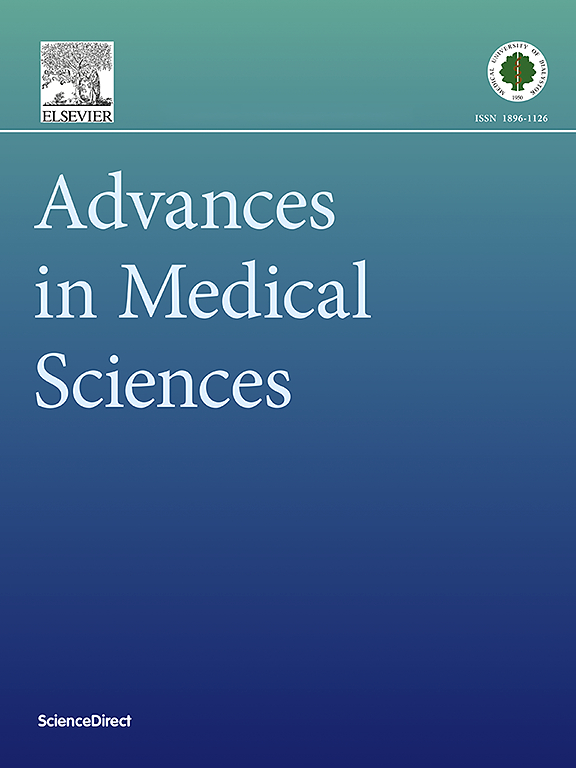临床相关浓度的罗哌卡因和利多卡因抑制卵巢癌细胞的增殖和迁移,并引起形态学改变。
IF 2.6
4区 医学
Q3 MEDICINE, RESEARCH & EXPERIMENTAL
引用次数: 0
摘要
目的:卵巢癌是一种预后较差的妇科恶性肿瘤,尤其是发现较晚。主要治疗包括细胞减少手术和辅助化疗。围手术期局部麻醉(LA)的使用可能会通过几种机制影响患者的预后。除其他因素外,LA的有益作用归因于该药物对癌细胞的抑制作用。该研究的主要目的是评估临床相关浓度的罗哌卡因和利多卡因对卵巢癌细胞系的影响。方法:分别用1、10、100、1000 μM的两种LAs作用于3株卵巢癌细胞系SKOV-3、SW-626和CA-OV-3。通过以下方法评估细胞功能和形态:细胞计数,相对比和全息显微镜,常规MTT试验用于剂量反应测试,伤口愈合试验用于迁移,醛脱氢酶鉴定癌症干细胞(CSC)。结果:罗哌卡因和利多卡因均显著减少细胞数量,改变形态,抑制迁移,并以浓度依赖的方式减少CSC的数量。结论:LAs在体外对卵巢癌细胞系有直接抑制作用,提示其在手术患者围手术期管理中的潜在益处。在卵巢癌手术中使用LA的临床研究是必要的。本文章由计算机程序翻译,如有差异,请以英文原文为准。
Ropivacaine and lidocaine at clinically relevant concentrations suppress proliferation and migration of ovarian cancer cells and induce morphological alterations
Purpose
Ovarian cancer ranks as a gynecological malignancy with poor prognosis, specifically if detected late. Primary treatment includes cytoreductive surgery and adjuvant chemotherapy with curative intent. Local anesthetics (LA) administered in the perioperative period may potentially impact patient outcome by several mechanisms. The beneficial impact of LA has been attributed, among other factors, to the drug's inhibitory effect on cancer cells. The primary aim of the study was to evaluate the effect of clinically relevant concentrations of ropivacaine and lidocaine on ovarian cancer cell lines.
Method
Three ovarian cancer cell lines (SKOV-3, SW-626 and CA-OV-3) were treated with 1, 10, 100, or 1000 μM of the two LAs. Cell function and morphology were assessed in the following ways: cell counting, phase-contrast and holographic microscopy, a conventional MTT assay for dose response testing, wound healing assay for migration, and cancer stem cell (CSC) identification by aldehyde dehydrogenase.
Results
Both ropivacaine and lidocaine significantly reduced cell number, altered morphology, suppressed migration, and decreased the population of CSCs in a concentration-dependent manner.
Conclusion
LAs exert a direct inhibitory effect on ovarian cancer cell lines in vitro, suggesting their potential benefits in perioperative management for patients undergoing surgery. Clinical studies using LA during ovarian cancer surgery are needed.
求助全文
通过发布文献求助,成功后即可免费获取论文全文。
去求助
来源期刊

Advances in medical sciences
医学-医学:研究与实验
CiteScore
5.00
自引率
0.00%
发文量
53
审稿时长
25 days
期刊介绍:
Advances in Medical Sciences is an international, peer-reviewed journal that welcomes original research articles and reviews on current advances in life sciences, preclinical and clinical medicine, and related disciplines.
The Journal’s primary aim is to make every effort to contribute to progress in medical sciences. The strive is to bridge laboratory and clinical settings with cutting edge research findings and new developments.
Advances in Medical Sciences publishes articles which bring novel insights into diagnostic and molecular imaging, offering essential prior knowledge for diagnosis and treatment indispensable in all areas of medical sciences. It also publishes articles on pathological sciences giving foundation knowledge on the overall study of human diseases. Through its publications Advances in Medical Sciences also stresses the importance of pharmaceutical sciences as a rapidly and ever expanding area of research on drug design, development, action and evaluation contributing significantly to a variety of scientific disciplines.
The journal welcomes submissions from the following disciplines:
General and internal medicine,
Cancer research,
Genetics,
Endocrinology,
Gastroenterology,
Cardiology and Cardiovascular Medicine,
Immunology and Allergy,
Pathology and Forensic Medicine,
Cell and molecular Biology,
Haematology,
Biochemistry,
Clinical and Experimental Pathology.
 求助内容:
求助内容: 应助结果提醒方式:
应助结果提醒方式:


